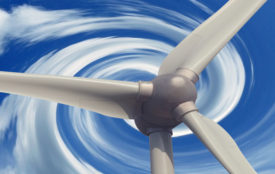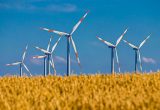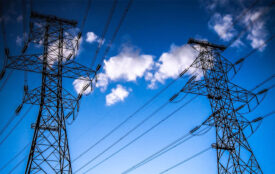Europe: Renewable energy is growing, coal-fired electricity production remaining constant
The use of renewable energies in Europe is continuing to expand: in 2015 EU member states were able to fulfil approx. a third of their electricity consumption using renewable energies such as wind, hydro and solar power.
This represents an increase from 679 terawatt hours (TWh) in 2010 to 923 TWh in 2015. At the same time, a recent study conducted by Oeko-Institut on behalf of Agora Energiewende shows that electricity production from lignite and hard coal has remained almost constant since 2010, at approx. 330 TWh and 500 TWh respectively. However, the production of gas-fired power plants has decreased significantly, from 768 TWh in 2010 to 485 TWh in 2015. This is reflected in the greenhouse gas emissions of electricity production: coal-fired electricity production accounts for approx. three quarters of emissions in the EU.
Renewable energies: wind power increasing, hydropower fluctuating
Wind power in particular has expanded in Europe: electricity production from this source has more than doubled, increasing from 149 TWh in 2010 to 307 TWh in 2015. Solar production has grown strongly from 23 to 101 TWh within the same time frame. Hydropower has remained constant in Europe, decreasing only slightly in 2015 (by 35 TWh compared to 2014). A comparison with the levels of previous years shows that years which saw little precipitation and low river levels have a significant impact on electricity production from renewable energies in Europe. The countries with the largest share of electricity production from renewable energies are Germany (193 TWh), Italy (109 TWh), Spain (99 TWh), Sweden (97 TWh) and France (90 TWh).
Fossil fuels: Lignite and hard coal constant, natural gas decreasing
Oeko-Institut’s study also shows that the growth of renewable energies is not displacing lignite and hard coal in the electricity mix. Electricity production from lignite and hard coal has remained almost constant; the countries with the highest electricity production from coal-fired power plants are Germany (158 TWh lignite, 118 TWh hard coal), Poland (54 TWh lignite, 79 TWh hard coal), the Czech Republic (38 TWh lignite) and the UK (95 TWh hard coal).
By contrast, electricity production from natural gas has fallen by more than a third. The reason for this decrease is the high fuel costs in the case of natural gas, which “push” gas-fired power plants out of the production system as soon as there are cheaper options such as those based on renewable energies (merit order principle). At the same time, flexible operation of most gas-fired power plants is possible, enabling them to complement renewable electricity production.
“Coal-fired electricity production has hardly changed in the past five years in Europe – it is still an important factor in the EU’s greenhouse gas emissions,” says David Ritter, an energy expert at Oeko-Institut and leader of the study. “However, there are differences among the member states: almost half of the EU’s electricity production from lignite occurs in Germany; the UK, Germany and Poland together produce more than half of the EU’s electricity from hard coal. If these countries produced less electricity from fossil energy sources, it could have a substantial effect on the EU’s greenhouse gas balance.”
- Oeko-Institut’s and Agora Energiewende’s study “Energy Transition in der Power Sector in Europe – State of Affairs 2015“ can be downloaded here
- Oeko-Instituts’s infographic “Status quo of the development of renewable energy in Europe, 2010 – 2015”







